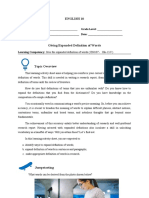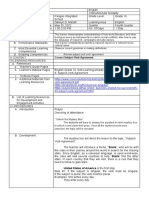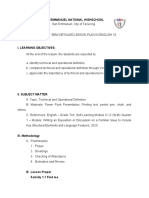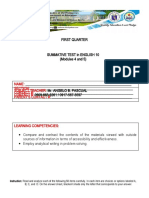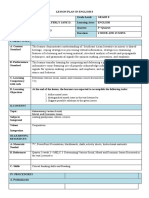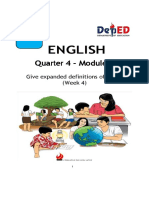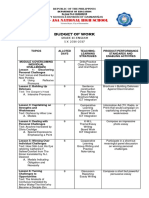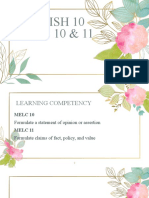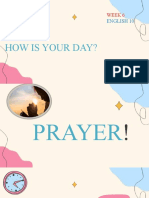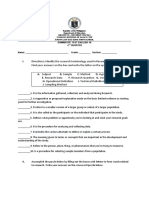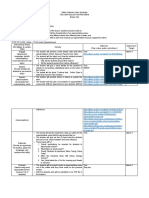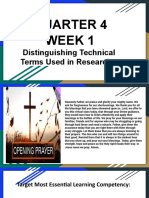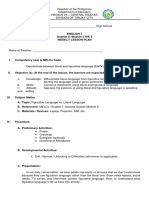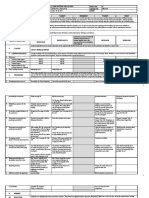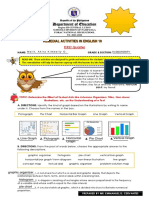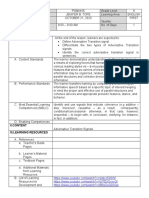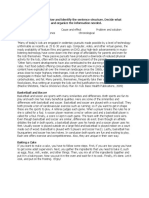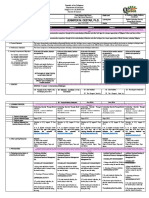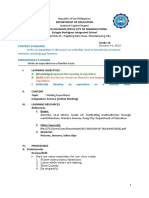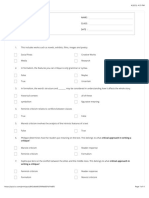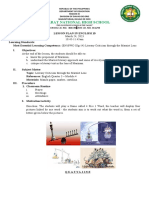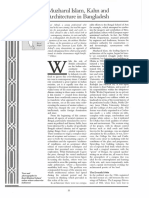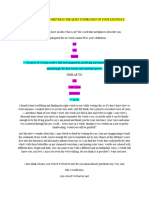0% found this document useful (0 votes)
363 views7 pagesQ3 M3 Formalist Approach
The document is a lesson plan for a 10th grade English class that focuses on critiquing a literary selection using the formalist approach. The lesson plan outlines the learning standards, objectives, subject matter, and procedure for the class. The procedure includes an activity to identify literary elements, analyzing and defining the formalist approach and literary elements, and applying what they've learned through additional activities critiquing a short story using formalist lens. The lesson aims to teach students how to examine the form and structure of a work to discover its true meaning.
Uploaded by
Teresita NuevaCopyright
© © All Rights Reserved
We take content rights seriously. If you suspect this is your content, claim it here.
Available Formats
Download as DOCX, PDF, TXT or read online on Scribd
0% found this document useful (0 votes)
363 views7 pagesQ3 M3 Formalist Approach
The document is a lesson plan for a 10th grade English class that focuses on critiquing a literary selection using the formalist approach. The lesson plan outlines the learning standards, objectives, subject matter, and procedure for the class. The procedure includes an activity to identify literary elements, analyzing and defining the formalist approach and literary elements, and applying what they've learned through additional activities critiquing a short story using formalist lens. The lesson aims to teach students how to examine the form and structure of a work to discover its true meaning.
Uploaded by
Teresita NuevaCopyright
© © All Rights Reserved
We take content rights seriously. If you suspect this is your content, claim it here.
Available Formats
Download as DOCX, PDF, TXT or read online on Scribd
/ 7

